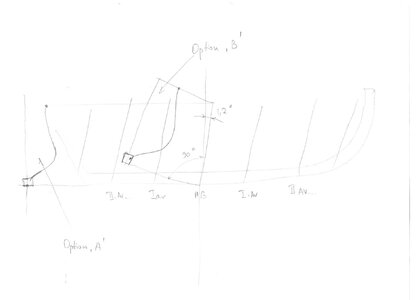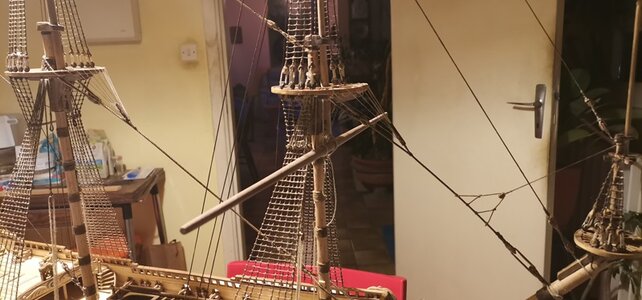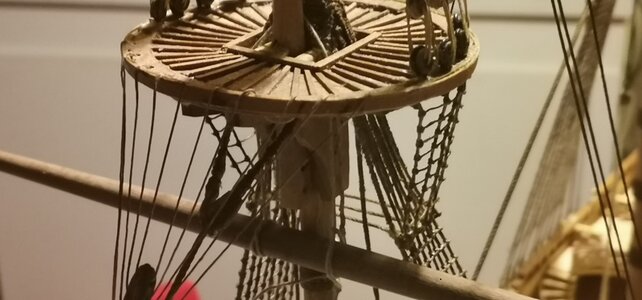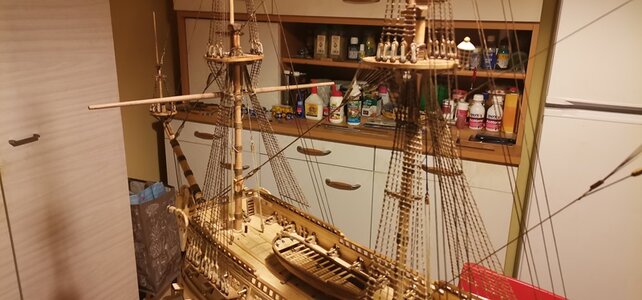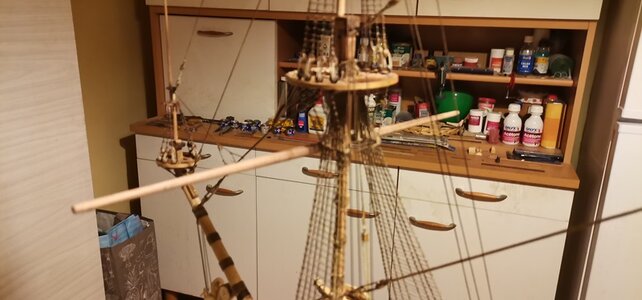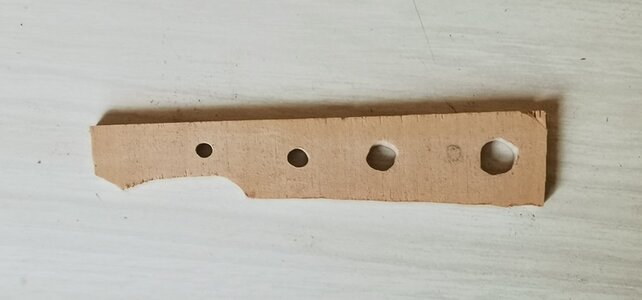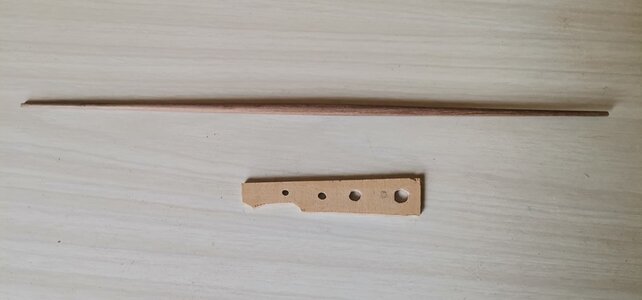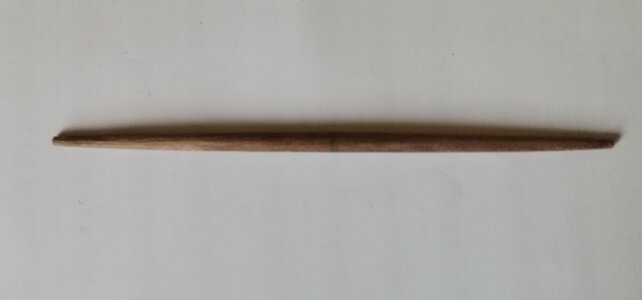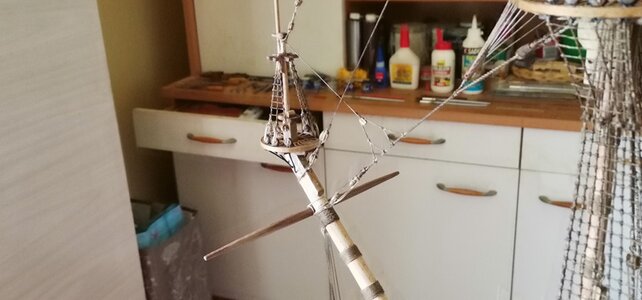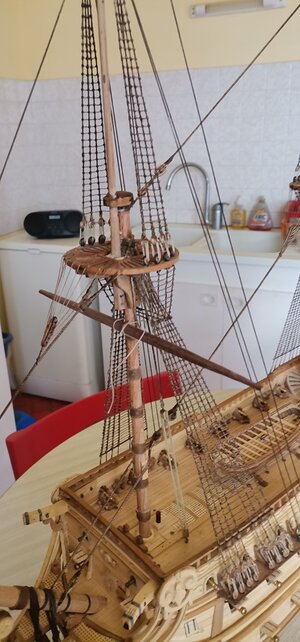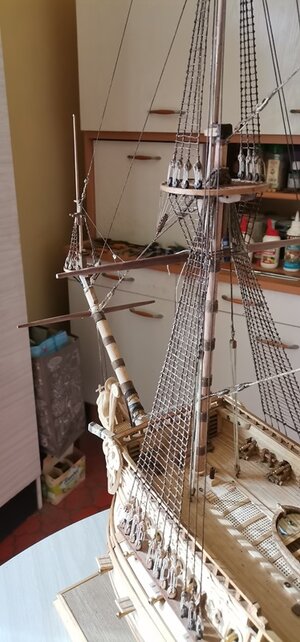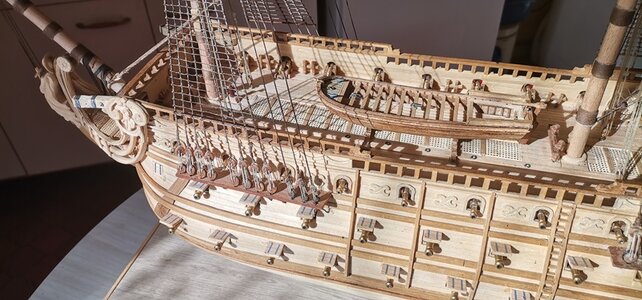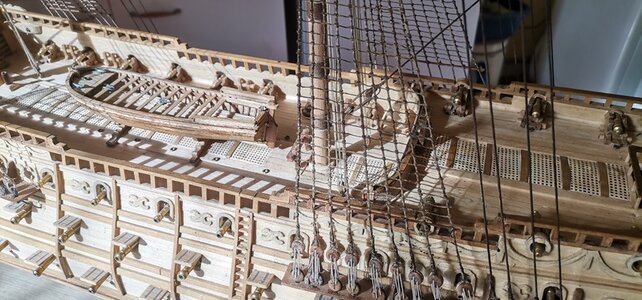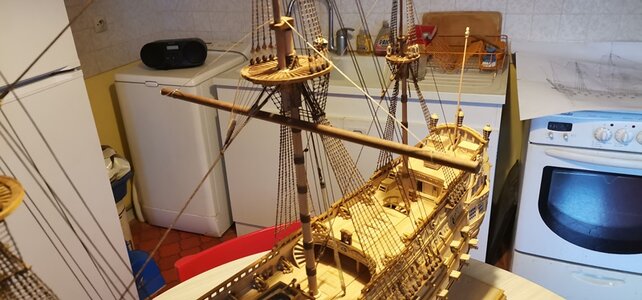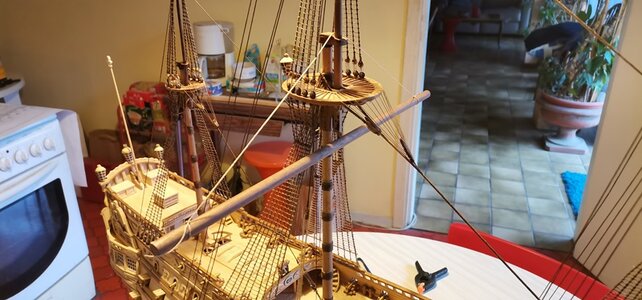After verification with Jean-Claude Lemineur, author of Saint-Philippe's monograph, the ship has a rear inclined keel :
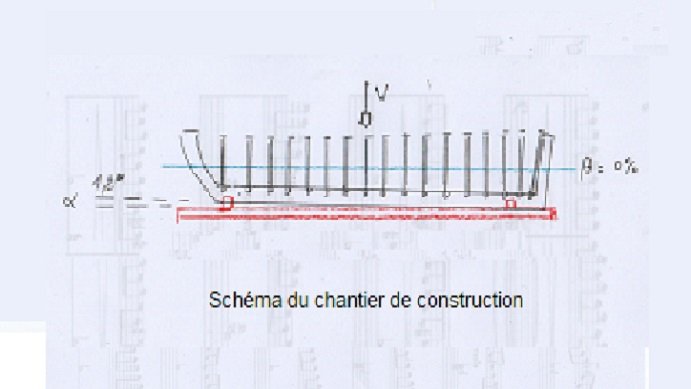
For exact construction, reproduce this angle pf 1.2 ° by a 1.2 cm part placed under fore keel, and install vertically all frames
For a closed hull construction, it's possible to ignore this particularity, because the difference is very small with 1.2 cm for one meter length, but, in such a case, it will be necessary to prepare a new draw of the horizontal keel, the result of general look could be even a little more "elegant"
Bonjour,
I see that you talked with M. Lemineur... And I see that he confirmed that the frames are not perpendicular to keel but to the load waterline (L.F.). So the sections I-VI.Av and I-VIII.Ar are indeed not perpendicular to the keel, they should be perpendicular to the L.F. What did he say about sheet 2 and sheet 3? Sheet 2 - is it looking perpendicular to the keel or along frames? The same with sheet 3 - is it looking perpendicular to the keel or normal to the frames?
